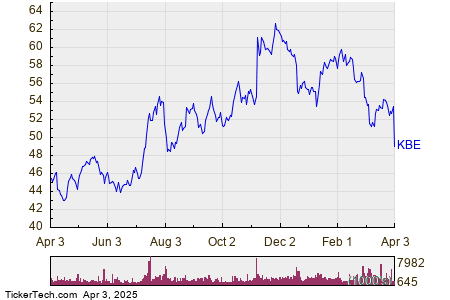Coffee Prices Stabilize Despite Recent Losses: Key Market Insights
May arabica coffee (KCK25) closed down -0.20 (-0.05%) on Wednesday, while May ICE robusta coffee (RMK25) posted a decline of -6 (-0.11%).
Market Overview and Recent Trends
On Wednesday, coffee prices recorded modest losses, stabilizing above the two-month lows reached on Tuesday. Over the past week, coffee markets have shown defensive behavior, with arabica prices hitting a two-month nearest futures low and robusta experiencing a drop to a two-and-a-quarter month low. Recent declines in coffee prices have stemmed from alleviated concerns over dryness in Brazil, as Somar Meteorologia reported that Brazil’s leading arabica coffee region, Minas Gerais, received 31.1 mm of rain in the week ending March 29, which is 114% of the historical average.
Weather Variables and Inventory Dynamics
Despite losses, coffee prices have some support due to ongoing weather concerns in Brazil. Somar Meteorologia has forecasted limited rainfall in Brazil’s coffee-growing areas over the next week to ten days, maintaining focus on supply issues. Meanwhile, coffee inventories are tightening. ICE-monitored arabica coffee inventories fell to a one-and-a-half-month low of 770,476 bags as of Monday, while ICE-monitored robusta inventories dropped to a one-week low of 4,342 lots on Wednesday.
Supply Fears and Export Trends
Ongoing concerns about supply are fueling support for coffee prices. On March 13, Cecafe reported that Brazil’s green coffee exports in February decreased by 12% year-over-year to 3 million bags. Additionally, on January 28, Conab, Brazil’s government crop forecasting agency, projected a 4.4% decline in Brazil’s 2025/26 coffee crop to a three-year low of 51.81 million bags, cutting the previous estimate for the 2024 crop from 54.8 million bags to 54.2 million bags.
Cooxupe, Brazil’s largest arabica coffee cooperative, has noted that high temperatures and below-normal rainfall last month in Brazil could negatively impact coffee yields this year, with Brazil being the world’s largest arabica producer.
Global Supply and Production Forecasts
On a more bearish note, Marex Solutions indicated on March 7 that they anticipate a global coffee surplus of 1.2 million bags for the 2025/26 season, compared to a surplus of 200,000 bags in the 2024/25 season. Increased global supplies may weigh on robusta coffee prices. Marex forecasts Vietnam’s robusta production to reach 28.8 million bags in 2025/26, up 7.9% year-over-year, and Brazil’s robusta production is expected to total 25 million bags, an increase of 13.6% year-over-year.
Ongoing drought conditions, exacerbated by last year’s El Nino weather, could have lasting effects on coffee crops across South and Central America. Consistent below-average rainfall in Brazil since last April has harmed coffee trees, especially during the crucial flowering stage, likely impacting the prospects for Brazil’s 2025/26 arabica coffee crop. Brazil is currently experiencing its driest weather since 1981, as noted by the natural disaster monitoring center Cemaden. Colombia, the world’s second-largest arabica producer, is slowly rebounding from last year’s El Nino-related drought.
Trade Dynamics and Price Influences
Robusta coffee prices are underpinned by reduced production. In Vietnam, drought has caused coffee production in the 2023/24 crop year to decline by 20% to 1.472 million metric tons, marking the smallest crop in four years. The Vietnam General Statistics Office reported a 17.1% year-over-year drop in 2024 coffee exports to 1.35 million metric tons. Moreover, the Vietnam Coffee and Cocoa Association has reduced its 2024/25 production estimate from 28 million bags to 26.5 million bags.
News of larger global coffee exports poses additional downward pressure on prices. Conab reported on February 4 that Brazil’s 2024 coffee exports surged by 28.8% year-over-year to a record 50.5 million bags. The Vietnam General Statistics Office also noted a 6.6% year-over-year increase in February coffee exports to 169,000 metric tons. However, the International Coffee Organization reported on February 6 that global coffee exports fell by 12.4% year-over-year to 10.73 million bags in December, with a slight decline of 0.8% year-over-year in total global exports from October to December to 32.25 million bags.
USDA Projections and Future Outlook
The USDA’s biannual report, released on December 18, provided mixed signals for coffee prices. The USDA’s Foreign Agricultural Service (FAS) projected a 4.0% year-over-year increase in world coffee production for 2024/25, rising to 174.855 million bags. This includes a 1.5% rise in arabica production to 97.845 million bags and a 7.5% increase in robusta production to 77.01 million bags. The 2024/25 ending stocks are anticipated to decrease by 6.6% to a 25-year low of 20.867 million bags.
Looking ahead to the 2025/26 marketing year, Volcafe lowered its Brazil arabica coffee production estimate to 34.4 million bags, which is nearly 11 million bags below its September estimates after a crop tour highlighted the severity of drought conditions. Volcafe now projects a global deficit of 8.5 million bags for 2025/26, wider than the previous year’s 5.5 million bag deficit and marking the fifth consecutive year of deficits.
On the date of publication, Rich Asplund did not have (either directly or indirectly) positions in any of the securities mentioned in this article. All information and data in this article is solely for informational purposes. For more information please view the Barchart Disclosure Policy
here.
The views and opinions expressed herein are those of the author, and do not necessarily reflect those of Nasdaq, Inc.

